Bybee Room Neutralizers
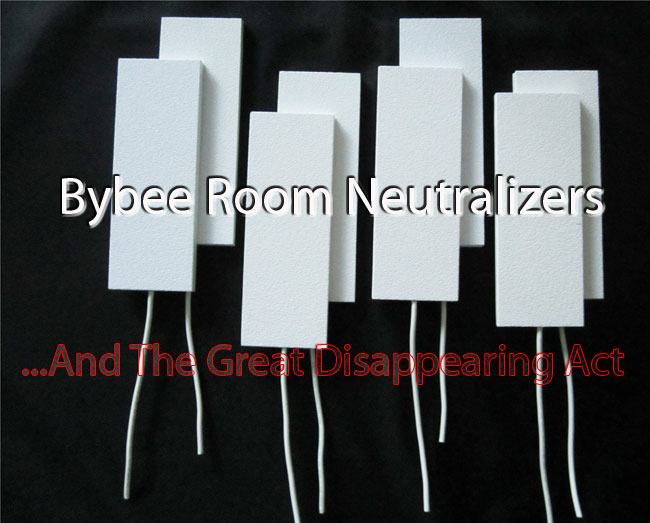
 The advertising on the TweekGeek website says that Room Neutralizers (hereafter RNs)—rather unprepossessing rectangles of quarter-inch-thick, laminated ABS plastic approximately 2” by 6” with a 6” pigtail of wire sticking out the end—will make the walls in the room “do a disappearing act.”
The advertising on the TweekGeek website says that Room Neutralizers (hereafter RNs)—rather unprepossessing rectangles of quarter-inch-thick, laminated ABS plastic approximately 2” by 6” with a 6” pigtail of wire sticking out the end—will make the walls in the room “do a disappearing act.”
Hmm, sounds like the sort of hyperbolic claim that audio manufacturers just love to make. Well, we’re used to it, we don’t take it too much to heart. But this simple three-word clause actually turns out to be a meaningful description of the effect these gadgets, products of the genius of Jack Bybee, produce in the listening room. They do something quite amazing and utterly unique in my experience, some the effects of which can be described idiosyncratically using familiar terms—air, detail, image, dynamics, sound stage, ambience. And although these words are certainly applicable and make for good copy, they fall short of a bull’s eye. Indeed, walls disappearing is more inclusive as well as evocative—the music seems to have a lot more breathing room and hence feels more natural and realistic. This is something that can be achieved only by changing the listening space itself. It cannot be achieved with wires or electronics or loudspeakers.
The pivotal concept here is compliance, “…a measure of the ability of a mechanical system to respond to an applied vibrating force, expressed as the reciprocal of the system’s stiffness.” The term “compliance” is familiar as applied to the ability of a phono cartridge stylus to accurately track the grooves in an LP. In this case, however, it applies to the ability of a medium (air) to transmit vibrations (sound pressure waves) with minimal frequency-specific time and waveform distortion. Bybee figured that if air could be made more compliant, then all audio frequencies would travel at the same rate of speed and remain coherent relative the source (loudspeaker).
Increasing the coherence of reproduced audio frequencies has a perceived effect on room boundaries, as noted above. It is not clear how this works, but the sense of a vastly expanded space, side to side and front to back, is unmistakable, even to an untrained listener. I had assumed that this effect would be limited to the room containing the RNs but I was pleasantly surprised to discover that it is quite noticeable in contiguous rooms sharing the same air space. (Although it is worth noting that our house is only 900 ft2.)
It is demonstrable that all matter, atoms or suspension bridges or planets, have a resonant frequency, the rate at which they naturally vibrate when physically energized. The resonant frequency of nitrogen, for example, is 5*1013 Hertz. Now, approximately 78% of the molecules constituting air are nitrogen atoms. If one could alter the behavior of nitrogen, one ought to be able to alter the way sound propagates through air. Bybee set out to design a passive device that would add energy at resonance, hypothesizing that an increase in molecular energy would result in the air being more compliant and that this would have a positive effect on the capacity of air to transmit sound pressure waves coherently.
I have had a couple of telephonic conversations with Jack Bybee with the goal of understanding—at least in some generalized, quasi-metaphorical fashion—the theory of operation of his RNs. Some of the data is proprietary, some of it (he suggested) is too conceptually challenging for the average person to even credit, but the real problem lies is the fact that I am not a physicist; and even if I were a physicist, I might still be unable to understand the underlying quantum mechanics. These are very sophisticated devices, proving the addage that looks can be deceptive.
A RN is made of a thick layer with encapsulated crystalline material which, like the so-called “stuff” used in Bybee’s power cord, produces magnetic moments in C13 isotopes. The presence of these polarized isotopes in the air stimulates nitrogen atoms to resonate at higher energy levels. Jack has tried to make clear to me just how this process works (while not letting the proprietary cat out of the bag) but I just don’t get it. There is a limit even to a metaphorical understanding of how particles behave.
I installed the eight RNs following the diagram of suggested placement that is included in the package, two on the backs of the loudspeakers, two in the front corners, two in the rear corners, two on opposite walls. A BluTak-like putty did the trick. I had to adjust placement due to the peculiarities of our living room, a brick wall here, a tall bookcase there. It’s early days yet, and I’ve not experimented with alternate placements, but experimentation is encouraged and I intend to eventually get around to it.
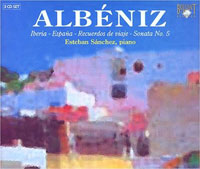 Estaban Sánchez, piano (Brilliant Classics 92398). I’ve heard this CD hundreds of times in the past year—I don’t seem to be able to get enough of Iberia and, especially, La Vega. So imagine my astonishment, not only at the quality of the sound, but at the revelation of inner voices, textures and nuances I’d not noticed before. This is not simply a matter of another notch on the audiophile score card, it is a significant revelation in the exposition, and hence the comprehension, of Albénez’s compositional genius. As for the sound quality itself, and the unspecified piano used to make this recording in Barcelona forty years ago, they are pretty unimpressive. (Unlike the playing, which is very impressive.) In retrospect, other physical changes to my stereo—power cords in particular—have rendered this music with increasing degrees of acceptability and melodiousness, but it has simply never sounded anywhere near this good. Perhaps most noticeable, here as well as in every recording I’ve played, is a richly enhanced perception of space and dimensionality, not simply as an instrumental locus in the sound stage, but as a sort of conducive ether in which the music breathes and flows with an unwonted ease and naturalness.
Estaban Sánchez, piano (Brilliant Classics 92398). I’ve heard this CD hundreds of times in the past year—I don’t seem to be able to get enough of Iberia and, especially, La Vega. So imagine my astonishment, not only at the quality of the sound, but at the revelation of inner voices, textures and nuances I’d not noticed before. This is not simply a matter of another notch on the audiophile score card, it is a significant revelation in the exposition, and hence the comprehension, of Albénez’s compositional genius. As for the sound quality itself, and the unspecified piano used to make this recording in Barcelona forty years ago, they are pretty unimpressive. (Unlike the playing, which is very impressive.) In retrospect, other physical changes to my stereo—power cords in particular—have rendered this music with increasing degrees of acceptability and melodiousness, but it has simply never sounded anywhere near this good. Perhaps most noticeable, here as well as in every recording I’ve played, is a richly enhanced perception of space and dimensionality, not simply as an instrumental locus in the sound stage, but as a sort of conducive ether in which the music breathes and flows with an unwonted ease and naturalness.
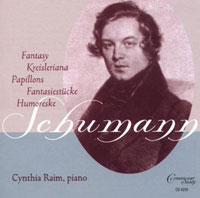 Cynthia Raim, piano (Connoisseur Society 4256). This recording is of superior sound quality to the Albénez CD. A beautiful Yamaha concert grand beautifully played by Ms Raim in the First Presbyterian Church in Utica, New York, a venue often used by Connoisseur. The recording does a good job of capturing the sound of the piano, not outstanding perhaps, but quite rich and dynamic. With the RNs in place it soars to new heights. The piano has more body, the strings have a ringing purity and harmonic richness, individual voices are not simply more articulate but weave together to convey a meaningful texture. The last bit is hard to put into words. If the music were instead a Shakespearean text, I might say the delivery of the lines was finer and conveyed more emotional and poetic sense, more meaning.
Cynthia Raim, piano (Connoisseur Society 4256). This recording is of superior sound quality to the Albénez CD. A beautiful Yamaha concert grand beautifully played by Ms Raim in the First Presbyterian Church in Utica, New York, a venue often used by Connoisseur. The recording does a good job of capturing the sound of the piano, not outstanding perhaps, but quite rich and dynamic. With the RNs in place it soars to new heights. The piano has more body, the strings have a ringing purity and harmonic richness, individual voices are not simply more articulate but weave together to convey a meaningful texture. The last bit is hard to put into words. If the music were instead a Shakespearean text, I might say the delivery of the lines was finer and conveyed more emotional and poetic sense, more meaning.
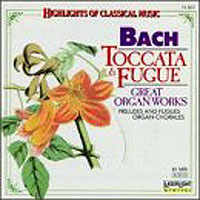 Hannes Kästner, Gabor Lehotka, pipe organs (LaserLight 15 507). I popped this “bargain” CD into the transport first thing this morning because I woke with the sound of a pipe organ in my head. Perhaps I had been dreaming of the small organ I used to play in the chapel on the Banbury Road, Oxford. The little fugue in g minor (BWV 578), which I played first, may be even more popular than the ubiquitous d minor toccata and fugue (BWV 565), which I played second. They are both highly accessible, exuberant music from Bach’s salad days. I suppose in a certain sense my audiophile goal has always been to put together a system that does a decent job with pipe organ music. Every time a new device has brought the stereo a significant step closer to that goal, I’ve raved about it. There is, I tell you, nothing in the whole world quite as exciting and aesthetically overwhelming as a pipe organ. Once again, the usual terms—dynamics, bass, articulation, tonal purity—are applicable but rather miss the point: that sense of presence, in which all such particulars combine and contribute to a conviction of realism. This occasion was one of the few times my wife responded strongly to a change in the makeup of the stereo. She came into the living room with tears in her eyes—the little fugue is one of her all time favorites. We were both bowled over by the richness and realism of the sound.
Hannes Kästner, Gabor Lehotka, pipe organs (LaserLight 15 507). I popped this “bargain” CD into the transport first thing this morning because I woke with the sound of a pipe organ in my head. Perhaps I had been dreaming of the small organ I used to play in the chapel on the Banbury Road, Oxford. The little fugue in g minor (BWV 578), which I played first, may be even more popular than the ubiquitous d minor toccata and fugue (BWV 565), which I played second. They are both highly accessible, exuberant music from Bach’s salad days. I suppose in a certain sense my audiophile goal has always been to put together a system that does a decent job with pipe organ music. Every time a new device has brought the stereo a significant step closer to that goal, I’ve raved about it. There is, I tell you, nothing in the whole world quite as exciting and aesthetically overwhelming as a pipe organ. Once again, the usual terms—dynamics, bass, articulation, tonal purity—are applicable but rather miss the point: that sense of presence, in which all such particulars combine and contribute to a conviction of realism. This occasion was one of the few times my wife responded strongly to a change in the makeup of the stereo. She came into the living room with tears in her eyes—the little fugue is one of her all time favorites. We were both bowled over by the richness and realism of the sound.
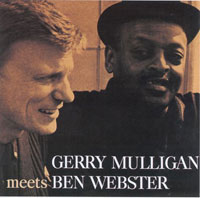 (Verve 841 661-2). Wow, amazing sound. And what can I say that I haven’t said before? I’ve worn words of praise to dust on this classic album. Two of the greatest saxophonists of the past century, that impeccable sense of timing and grooviness only the very great ones achieve. As if time itself were a gently flowing river without beginning or ending. I wish I could be more explicit in describing the sound quality, but I can say that recognition was instantaneous and completely unmistakable: something very, very special, rhythmically, spatially, dynamically. Talk about presence! If I were more of a jazz guy, I’d say Bybee’s RNs are absolutely essential equipment. Does it get any better than this? I suppose it must… This is, after all, a relatively modest system.
(Verve 841 661-2). Wow, amazing sound. And what can I say that I haven’t said before? I’ve worn words of praise to dust on this classic album. Two of the greatest saxophonists of the past century, that impeccable sense of timing and grooviness only the very great ones achieve. As if time itself were a gently flowing river without beginning or ending. I wish I could be more explicit in describing the sound quality, but I can say that recognition was instantaneous and completely unmistakable: something very, very special, rhythmically, spatially, dynamically. Talk about presence! If I were more of a jazz guy, I’d say Bybee’s RNs are absolutely essential equipment. Does it get any better than this? I suppose it must… This is, after all, a relatively modest system.
We say that musical realism is the goal of our hobby, the reason for all the time and energy and money. But we are not quite that pure: we also like beautifully anodized aluminum, we like blue digital readouts, we like heft, we like solid industrial design. In short, we want substance, concrete evidence, for our hard-earned dollars. Well, $1899.00 may seem like a lot of money to pay for eight rectangles of white plastic, even with wires dangling out. But a small fortune went into the research that enabled development of the material from which they’re made. And their ultimate value, of course, lies in what they accomplish not in how they look. The improvement in sound and imaging you’ll get for your money is worth many times that asking price. The cost/benefit ratio when compared with a new transport or amplifier or power cord makes Bybee Room Neutralizers that rarest of animals in the audiophile menagerie: a genuine bargain. We liked them so much, we simply could not face the prospect of parting with them and have purchased the review set.
[ADDENDUM 7/26/2015] Now that my review has been published and the verbal dust has settled, I want to write a brief addendum, something I’ve never before felt called upon to do, in further hope of influencing you, dear reader; in further hope of touching that secret chamber of your audiophile’s heart where, in order to retain a modicum of sanity and objectivity amidst the hoopla that plagues our hobby, skepticism is the paradigm.
But first a sort of apologia for the published review. For the first time in all these years a review has left me with an unwonted sense of what I might call failure. I’ve always tried to understand the scientific principles and design theories behind the operation of the devices I’ve reviewed, and I’ve always tried to include this understanding as a core part of the review, on the assumption that others will find it as interesting as I do. And I’ve always managed to acquire some level of understanding no matter how technical the information I had on hand. Often this understanding was less than I could desire, but I’ve never before understood so little about ‘how they work’ as I do in this case.
I can understand how rendering 78.09% of air molecules (nitrogen) more compliant can reduce the propagation differential of audio frequencies, but I’ve no idea how creating magnetic moments in carbon isotopes (C13) causes nitrogen (N) to resonate are higher energy, or how this increase in energy results in greater compliance—nor, for that matter, how RNs (presumably containing Bybee’s proprietary “stuff”) causes the nuclei of those carbon isotopes to polarize in the first place. The more I think about, the less I seem understand. Which leaves me feeling unsatisfied with this review.
Nonetheless, I am revisiting because as time has gone by I am more and more impressed with Bybee’s Room Neutralizers, and I sincerely would like to influence you to try them. They are far and away the most singular and extraordinary device I have ever had the privilege to audition. I have tried to think of new phrases, new and creative adjectives and similes with which to describe their effects, but I am just not that creative and I might well end in simply repeating myself. To do so would bore you and me, and I don’t want to do that. But I do want to assure you that in the several weeks have gone by and the numerous CDs I’ve played since my review was published, I continue discovering new and astonishing improvements in the quality of the sound. The entire character of this stereo has changed. It is a far classier system than I ever imagined owning.


Russell Lichter
Further thoughts by Clement Perry
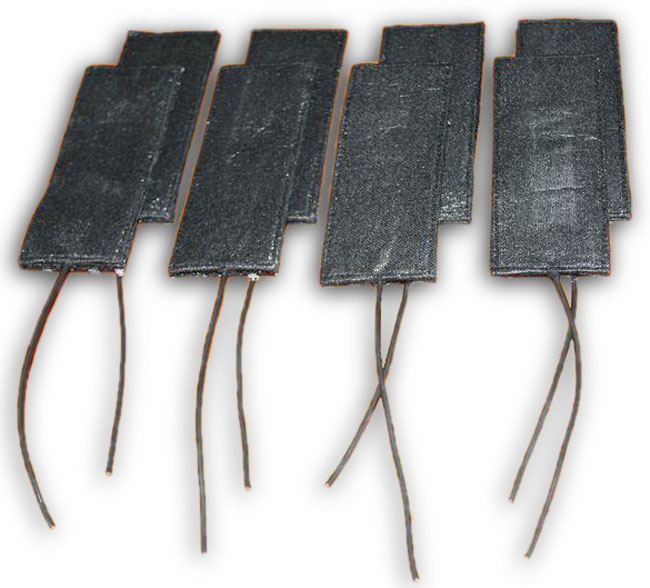
I must admit, Russell’s admiration of the performance of Bybee RNs surprised me. Not because Russell heard exactly what the RNs were designed to do, but because they did so with no support or assistance from other, similar type devices that have gained notoriety on these pages as well. From Russell’s impressions, well documented above, the RNs impacted him as much as they did me, despite the fact I use several other products in conjunction with the RNs. In fact, I originally wanted to write the review but felt somewhat hesitant because I had acoustic enhancers such as the Stein Harmonizers, IPC Energizers and the just updated Acoustic Revive RR-888—already providing their own style of magic in my listening space.
All these products make similar claims about altering air molecules and/or radiating energy at our atmospheric resonance, the so-called Schumann frequency of 7.83 Hz. All of these products have been reviewed at great length here (see archives). Russell, who recently reviewed the Bybee AC cords, owns none of these products and hence, with a cleaner slate, would be a much better candidate to evaluate the RNs. Moreover, I figured he would not have a clue as to what exactly to expect.
Finally, since I was still living with and enjoying the cumulative effects of the Steins, IPCs and AR RR-888, accurately judging the effects specific to the RNs in my space would be challenging. Hearing what these products can do on their own was the sole reason Russell was given the opportunity to write the review. Now that Russell’s impressions are official, here’s a little background on the RNs.
Bybee, well-known for the remarkable products he has designed over the past two decades or more, had become obsessed with the methods by which the IPC’s worked after his first up close and personal experience with them (I was adamant he give them a listen). Bybee was so impressed and intrigued by the effect these products produced on his sound system — especially considering that they are passive — he decided to build some for himself. His longtime experience with quantum mechanics made it relatively easy for him to wrap his mind around a theory of what he thought the IPC products were doing. After countless hours, exhaustive tests and experiments over a period of many months, Bybee came to conclude, as stated in Russell’s review, that compliance in fact, was the key element. Bybee chose that familiar word in an effort to explain his theory to someone, who like many of us, knows little enough about auto mechanics, let alone quantum mechanics. He felt so confident he offered to sell his technology directly to the folks at IPC. They never even bothered listening to his proposal.
I thought it was a great idea when Bybee decided to introduce this new technology into his product line early in 2015. He started with the outrageously affordable $119 Bybee Signal Quantum Purifier that David Caplan fell so in love with (read that review here). The success of Signal Purifiers led to his designing a state-of-the-art AC cord employing the new “compliant” technology, selling for a mere $1500. (Russell wrote on that product here).
However, the Room Neutralizer is something that is more “out there” in terms of acceptance as well as application. But in the final analysis, the real question is whether the product works. As Russell’s review makes clear, the answer to that question is unreservedly affirmative.
My follow-up is really about whether the new RNs will further enhance a listening space in which similar products are already ensconced. The answer is YES, absolutely. Upon placing eight RNs on different parts of my walls (also using BluTack), I was able to discern earthier tones, a more delicate flow (less distortion) alongside greater harmonic decay. Excited, I called Bybee asking what the hell was going on? “More compliance” was all he uttered.
Unlike the Stein Harmonizers, sitting in the corners of my room on stands about four feet off the floor, or the IPCs on the floor in front of my speakers, or the pair of AR RR-888’s resting on Corner Busters behind my loudspeakers—the RNs were placed directly on the walls about five feet high. I reiterate: the RNs in my listening space seemed to do a better job of cleaning up distortions as well as expanding the soundstage and imparting greater three-dimensionality. As has often been the case, these are distortions that I had no idea were there in the first place. If you’re a high-powered solid-state user such as myself, you will be amazed at how much closer your system comes to recreating those most delicate passages and with the harmonic rightness tube lovers cannot live without. This dear readers, with just a few acoustic enhancers such as the RNs on your listening walls.
The final question is which to purchase if you could only buy one of these devices? At $1899.00 for a set of eight RNs versus two or more IPC Energizers at $1500 a pop, it’s a no-brainer to go with the RNs. IPC’s powerful Room EQ’s, which resemble ironing boards, retail for $5,000 a pair and though their effect is quite powerful, they are way too expensive for most mere mortals to consider here. [afterthought: I find RNs are very effective and more efficient when attached on my listening room’s walls rather than sitting in front of or behind my loudspeakers.]
The Stein Harmonizers are also about the same price as the IPC Energizers ($1500 ea) and you’ll need at least two pairs for them to perform at full throttle. They too are very effective at creating a huge landscape of sound that is imbued with life. But they too unfortunately are quite expensive.
I think the AR RR-888s, the latest audio product from Japan, are wonderful products as well and for a mere $750 each, they’re less than half the asking price of the RNs and hard to pass on for what they offer in terms of creating a more wholesome and natural sound field. I do not think you would go wrong starting with the RR-888s, if you want to get the most bang for the buck. They proved their worth in my system as soon as I turned them on. They simply take you closer to a more natural, real and life-like sound. They are not as costly as the RNs but they are also not as versatile. But they are one product I can recommend, based solely on price/performance, over the Bybee RNs. The others are all noteworthy in their effectiveness but are also much more expensive
Bybee Neutralizers are not cheap either, but considering what they can do to improve the sonics of a room, I consider them affordable. I cannot imagine what price you’d have to spend on electronics to get this level of improvement but I am sure it will be many times more than $1899.00. TweekGeek, the Bybee distributor, offers a 30 day “try before you buy” guarantee. So, there you go. I dare you to try them and not be impressed. 

clement perry
Price as reviewed: $1899 per set (8)
US importer: TweekGeek
Website: www.tweekgeek.com/bybee-room-neutralizers/
Stereo Times Masthead
Publisher/Founder
Clement Perry
Editor
Dave Thomas
Senior Editors
Frank Alles, Mike Girardi, Key Kim, Russell Lichter, Terry London, Moreno Mitchell, Paul Szabady, Bill Wells, Mike Wright, Stephen Yan, and Rob Dockery
Current Contributors
David Abramson, Tim Barrall, Dave Allison, Ron Cook, Lewis Dardick, Dan Secula, Don Shaulis, Greg Simmons, Eric Teh, Greg Voth, Richard Willie, Ed Van Winkle, and Rob Dockery
Music Reviewers:
Carlos Sanchez, John Jonczyk, John Sprung and Russell Lichter
Site Management Clement Perry
Ad Designer: Martin Perry





Be the first to comment on: Bybee Room Neutralizers